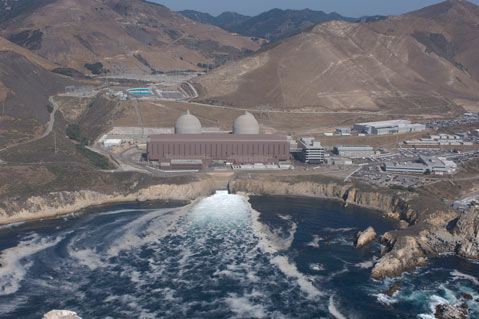Diablo Canyon: How Safe is Safe Enough?
Supes Get an Earful About the Nuclear Power Plant

Jearl Strickland, a senior regional manager at the Diablo Canyon nuclear power plant, was dispatched from his post at Avila Beach to Santa Barbara on Tuesday to assure Santa Barbara’s county supervisors they have no cause for concern about a Fukushima-style nuclear nightmare anytime soon. Though Strickland was praised for his candor, many key questions remained unanswered by the end of the session, and he will be called back for a repeat performance — along with representatives of the Nuclear Regulatory Commission (NRC) — for a special meeting June 16. At that time, Strickland and his federal counterparts will be asked to explain why there’s only a 10-mile containment zone around Diablo Canyon, as opposed to the 30-mile containment zone surrounding the Fukushima reactors in Japan. (Initially, it was only 12.)
The supervisors made it clear they want to know what effect a radiation escape from Diablo Canyon would have on area crops, on the South Coast water supplies at Lake Cachuma, and on the ocean itself. Likewise, they expressed concern about evacuation plans should Diablo Canyon suffer some catastrophic event.
Supervisor Salud Carbajal pushed his colleagues to adopt a resolution akin to the one unanimously passed by the San Luis Obispo Board of Supervisors calling on PG&E — Diablo Canyon’s parent company — to suspend its relicensing application with the NRC until new studies on a recently discovered offshore earthquake fault 300 yards from the plant were completed.
Strickland painted a vivid contrast between the Fukushima reactors — still about a year away, he said, from 100-percent containment — and Diablo Canyon’s. The real threat, he said, was not so much the reading on the Richter scale as it was the ground acceleration unleashed by the quake and its proximity to the plant. Diablo Canyon, he said, was built to withstand ground acceleration twice as much as Japan’s; the containment area for Diablo Canyon’s accumulation of spent fuel rods — intensely radioactive — was twice that. Whereas Diablo Canyon is built on top of hard stone 85 feet above sea level, Fukushima is perched over soft soil pretty much at sea level.
Strickland stressed the Japanese reactors withstood the massive quake epicentered 81 miles off the coast, successfully shutting down. It was only after the 46-foot tsunami struck an hour later that the plants’ reserve generators were knocked out. That sustained loss of energy precipitated the subsequent explosions and near meltdown that have since horrified the world.
By contrast, Strickland said Diablo Canyon’s two reactors had three backup generators apiece, each one capable of powering the plant — and keeping the core safely cooled — for seven days. Two reservoirs above the plant hold 5 million gallons of water, enough for 20 days. Under questioning, he revealed there are 2,600 power assemblies in the spent fuel pool, which has a capacity of 2,700. With no place to take the spent fuel, Diablo Canyon has become a de facto nuclear waste depository with the technical capacity to hold waste for 100 years. Federal regulators contend nuclear waste remains dangerous for hundreds of thousands of years.
Strickland was gently grilled on a host of issues by Supervisors Doreen Farr, Janet Wolf, and Carbajal. When asked what changes had been initiated as a result of the Japanese crisis, Strickland said plant managers had begun conducting physical tests on certain safety pumping procedures, which he acknowledged proved “a lot more difficult than anticipated.” Carbajal replied that remarks like that “put fear in so many people,” because they’ve been assured so many times that the plant has always been operated at maximum safety efficiency.
In related news, Congressmember Lois Capps confronted NRC chair Gregory Jaczko
at a congressional subcommittee hearing May 4, demanding why he hadn’t responded to her request — submitted in writing a month before — that the NRC suspend the relicensing application for Diablo Canyon pending results of new seismic studies based on the 2008 discovery of a fault line within 300 yards of the nuclear power plant. Capps argued that such studies would have been required to license the plant, located within five kilometers of five active faults, in the first place and that they should be required to relicense it, as well. She expressed concern that a seismic event on one of those faults could trigger even greater activity on another.
Although the two reactors’ licenses don’t expire until 2023 and 2024, PG&E initiated relicensing last year. Capps said she didn’t want to look back after the fact “at some horrific situation” at Diablo Canyon because there was a rush to relicense when there was plenty of time to study the matter. “I can only imagine what the Japanese people are saying now,” she said. Jaczko stressed the NRC could and would act upon new seismic information at any time, adding that the relicensing process was not the only venue to air such matters. As to the time it’s taken to get back to Capps, Jaczko explained he’d received similar requests from other parties and that the NRC needed to evaluate its response. As to when that might be, he said, “In about a month.”



